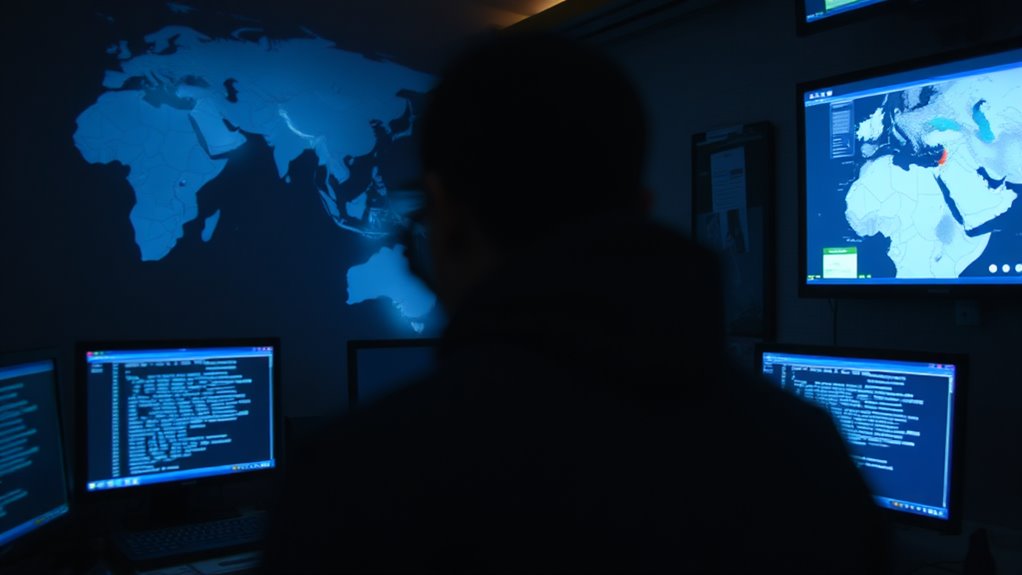You’re about to explore the complex world of cybersecurity in Arab nations, where outdated systems and growing threats collide. What challenges will you uncover? As digital landscapes shift, understanding risk management is key—not just in security but also in navigating online platforms safely. Discover Win Real Money with Casino Games and explore a world where entertainment meets strategy in a secure environment.

The Present and Future of Cybersecurity
As you delve into the current state of cybersecurity in Arab nations, it becomes clear that the region’s rapid digitization has created a double-edged sword: while it’s driven economic growth and innovation, it’s also introduced a plethora of security risks.
You’ll notice a surge in cyber threats, from phishing to malware attacks. It’s crucial to understand that cybersecurity isn’t just a technical issue, but also a societal one.
You must consider the human factor, as it’s often the weakest link in the security chain. This complex interplay requires a nuanced approach to mitigate risks and ensure a secure digital landscape.
Vulnerabilities in Critical Infrastructure
While you’re assessing the cybersecurity landscape in Arab nations, it’s crucial to consider the vulnerabilities in critical infrastructure, which can have far-reaching consequences if compromised.
You’ll find that these vulnerabilities can stem from outdated systems, poor maintenance, or lack of investment in security measures.
As you delve deeper, you’ll realize that the interconnectedness of critical infrastructure can exacerbate the risks, making it essential to identify and address these weaknesses.
Challenges in Implementing Security Measures
Implementing security measures in Arab nations’ critical infrastructure is a daunting task, since it requires a significant overhaul of existing systems, which can be costly and time-consuming.
You’ll need to weigh the costs and benefits, considering the potential impact on daily operations. As you assess your systems, you’ll identify areas that require immediate attention, such as outdated software and hardware.
You must prioritize these vulnerabilities, allocating resources to address them. By doing so, you’ll be able to strengthen your infrastructure’s security posture, reducing the risk of breaches and cyber threats.
You’ll have to make tough decisions.
Threats to Economic and Government Systems
How do cyber threats compromise the stability of economic and government systems in Arab nations?
You’ll find that these threats can disrupt critical infrastructure, causing widespread instability. As you analyze the situation, you’ll see that cyberattacks can target financial systems, stealing sensitive data and compromising national security.
You’re likely to notice that government systems are also vulnerable, with hackers attempting to gain access to classified information. This can lead to a loss of public trust and undermine the government’s ability to function effectively.
You must consider the potential consequences of these threats to understand their impact.
Building Cybersecurity Capacity and Expertise
As you delve into the realm of cybersecurity in Arab nations, you’ll find that building capacity and expertise is crucial to mitigating the threats that compromise economic and government systems.
You’re essentially developing a strong defense mechanism against cyberattacks. By investing in cybersecurity, you’re not only protecting sensitive data but also fostering a culture of security awareness.
You’ll need to identify key areas that require improvement and develop strategies to address them. This involves creating a skilled workforce, implementing effective policies, and promoting collaboration between governments and private sectors to stay ahead of emerging threats.
losing Remarks
You’ll need to develop robust cybersecurity capacity and expertise to address the complex challenges Arab nations face. As you implement effective security measures, you’ll mitigate vulnerabilities and protect critical infrastructure. It’s crucial you prioritize cybersecurity to safeguard economic and governmental systems, ultimately ensuring a more secure digital future for the region. You must act now.
